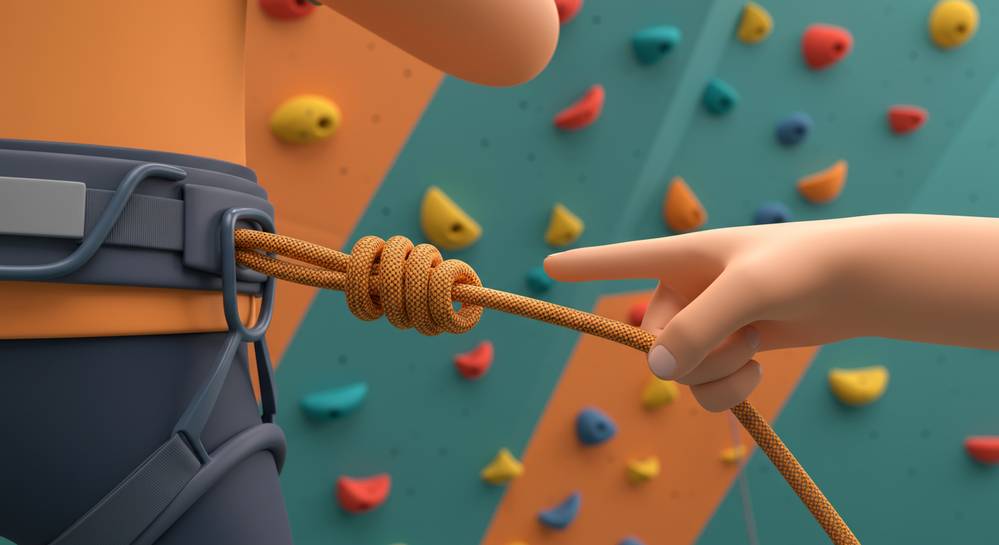Embarking on your climbing journey is an exciting step towards building strength, focus, and community. But knowing how to get started in rock climbing can feel daunting. This guide simplifies the process, breaking down the essential first steps, from understanding the different climbing styles to choosing your initial gear and mastering foundational safety techniques. We will guide you from the ground up.
Understanding the different types of climbing

Understanding the main disciplines is a crucial first step in learning how to get started in rock climbing. Each style presents unique challenges, but most people begin with one of the first two types of rock climbing for beginners. This knowledge helps you select a path that aligns with your fitness goals and comfort level. Making the right initial choice builds confidence for your journey.
- Bouldering: This involves climbing on short walls under 15 feet without ropes. Thick crash pads below ensure a safe landing. It is perfect for building explosive strength and problem-solving skills. Bouldering requires very little equipment, making it a highly accessible entry point.
- Top-Roping: As the safest form of roped climbing, this is ideal for newcomers. The rope is secured to an anchor at the top before you begin. A partner on the ground, a belayer, manages the rope to catch any falls, letting you focus on movement.
- Lead Climbing: This advanced technique requires carrying the rope up and clipping it into protection points. It introduces greater risk and demands significant training in safety and rope management. Most climbers transition to lead climbing after mastering top-roping.
Your first climb at an indoor gym

An indoor climbing gym is the ideal starting point for your journey. These facilities provide a controlled, safe environment designed specifically for learning. They offer equipment rentals, introductory courses, and a supportive community. This is the most recommended path for anyone figuring out how to get started in rock climbing and building foundational skills.
What to expect on your first visit
- Waivers and Orientation: You will sign a liability waiver and receive a mandatory orientation. This process covers the facilitys rules and critical safety procedures to protect everyone.
- Gear Rental: You can rent all necessary gear, including climbing shoes and a harness. This allows you to try the sport without a significant upfront financial commitment.
- Professional Instruction: Always consider an introductory class. A certified instructor will teach you how to properly put on your harness, tie essential knots, and belay a partner safely.
Understanding gym etiquette
A climbing gym is a shared space where awareness is key. Be mindful of climbers above you and never walk directly underneath them. Do not distract belayers, as their focus is critical for their partners safety. Finally, be patient and courteous when waiting for a route to become available.
Essential gear for beginner climbers
While gyms provide rentals, purchasing your own equipment is a key step as you commit to the sport. Owning your beginner climbing gear ensures a proper fit, better performance, and improved hygiene. This initial investment is a fundamental part of how to get started in rock climbing seriously. Focus on these core items first before considering more specialized equipment.
- Climbing Shoes: This is your most important purchase. A snug shoe lets you use your feet with precision on small holds. Try on several pairs to find a model that is tight but not painful, as the right fit directly impacts your ability to climb effectively.
- Harness: A comfortable harness is essential for any roped climbing. It must fit securely around your waist and leg loops. This piece of safety equipment is non-negotiable for top-roping or lead climbing.
- Chalk and Chalk Bag: Chalk keeps your hands dry, which is critical for maintaining a strong grip on holds. A chalk bag straps to your waist, allowing for easy access during a climb.
- Belay Device and Carabiner: This mechanical tool is used to control the rope and protect your partner. You will need a locking carabiner to attach it to your harness. Always seek professional training before using this equipment.
Basic techniques and safety principles

Successful climbing relies more on technique and balance than sheer strength. Focusing on proper form from day one helps you progress faster and prevent injuries. Mastering these fundamentals is a non-negotiable part of learning how to get started in rock climbing. While technique helps you advance, safety principles ensure you can continue climbing for years to come.
Core climbing movements
- Trust Your Feet: Your legs are far stronger than your arms. Focus on pushing yourself up with your legs instead of pulling with your arms. This is the single most important technique for efficient climbing.
- Keep Arms Straight: Hanging from straight arms conserves precious energy. This technique shifts weight onto your skeletal structure, reducing muscle fatigue and allowing you to climb longer.
- Maintain Three Points of Contact: Always keep three limbs on the wall while moving the fourth. This creates a stable base, preventing slips and improving your balance as you move.
The golden rules of safety
Safety must always be your top priority. Before any roped climb, perform a thorough partner check. Verify that harnesses are fitted correctly, knots are tied properly, and the belay device is set up correctly. Maintain clear communication with your belayer throughout the climb. If you are ever in doubt, do not hesitate to ask gym staff for assistance.
Getting started in rock climbing is a journey of small, achievable steps. By visiting a local gym, learning the basics of safety, and focusing on technique over strength, you build a solid foundation for a lifetime of adventure. The wall is waiting for you. For more expert guides and gear reviews, explore everything on Sport Wave Quest and elevate your passion for sports.




